Metz Mecablitz 58 AF-1 flash test: wink light, catchlight card, extended zoom
In this review, we demonstrate several features of Metz Mecablitz 58 AF-1 flash, including the secondary reflector (wink light), built-in catchlight card, and the extended zoom mode.
For frame coverage evaluation results please refer to Metz Mecablitz 58 AF-1 frame coverage test
All the tests are done in the TTL mode, so the output of the main reflector of Metz 58 is set automatically. The flash is mounted on camera. The distance from the camera to the subject is about 6 feet. The walls and the ceiling are light-colored, and they are about 5 feet away from the subject.
Ceiling bounce and catchlight card
This first test compares ceiling bounce images and the images where the built-in catchlight card is used along with the ceiling bounce. The ceiling bounce varies depending on the flash zoom setting, so is the light reflected by the catchlight panel. The ratio between the bounced light and the fill light from the catchlight card also depends on the flash zoom value.
For the test, we picked the middle (more common) flash zoom value of 50mm and the ultra-wide 18mm value.
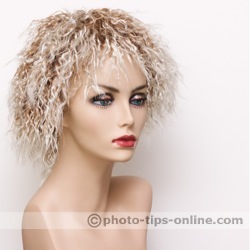 |
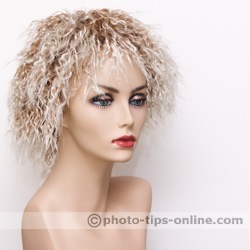 |
| ceiling bounce, 50mm flash zoom |
ceiling bounce, 50mm flash zoom, cathlight card |
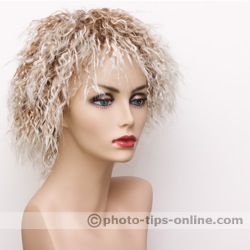 |
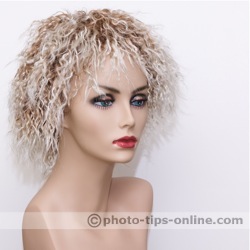 |
| ceiling bounce, 18mm flash zoom |
ceiling bounce, 18mm flash zoom, cathlight card |
The images above show that 18mm flash zoom value shifts the light ratio towards the fill light. So, when shooting with the built-in catchlight card, use wider flash zoom values for more pronounced fill light.
Ceiling bounce and secondary reflector
Using the secondary reflector as a fill light should produce results similar to the ones above received with the catchlight card. The ratio between the bounced light and the fill light can be controlled manually by setting the output of the secondary reflector to 1/1, 1/2 or 1/4.
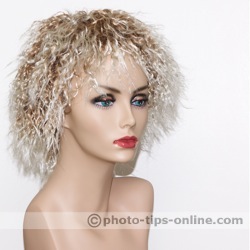 |
| ceiling bounce, 50mm flash zoom, secondary reflector at full power |
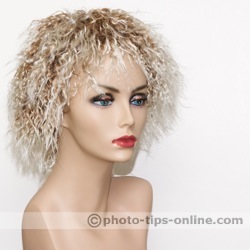 |
| ceiling bounce, 50mm flash zoom, secondary reflector at half power |
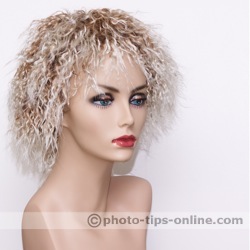 |
| ceiling bounce, 50mm flash zoom, secondary reflector at quarter power |
As you can see, even at the lowest power setting, the secondary reflector still delivers more fill than the catchlight card from the same distance.
Wall bounce and secondary reflector
The catchlight card can only be used when bouncing off of a ceiling while the secondary reflector comes in handy when you want to bounce off of side walls. The following pictures show left wall bounce and left wall bounce with the wink link set at 1/4 of the power.
 |
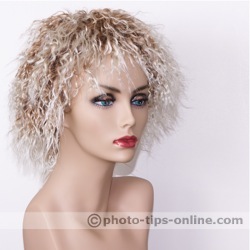 |
| left wall bounce, 50mm flash zoom |
left wall bounce, 50mm flash zoom, secondary reflector at quarter power |
Wall/Ceiling bounce and secondary reflector
The following two images differ from the previous example in the flash head position. The flash head is not only turned to the left but also tilted at 45 degrees. Thus, the light from the main reflector is bounced off of the ceiling and the wall.
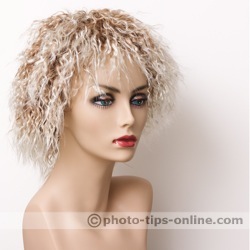 |
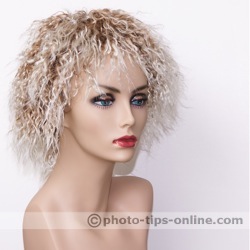 |
| left wall and celing bounce, 50mm flash zoom |
left wall and celing bounce, 50mm flash zoom, secondary reflector at quarter power |
Extended zoom
The extended zoom mode sets the flash head zoom one step back from the "proper" position. The first two images below are taken with the lens set at 60mm. In the normal zoom mode, the flash head is set to 50mm (left image). In the extended zoom mode, it is set to 35mm. The next test is done with the lens set at 28mm.
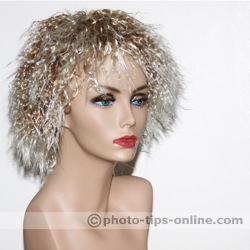 |
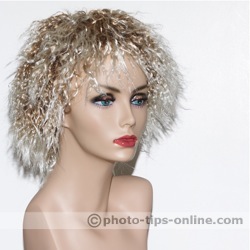 |
| 60mm lens zoom, regular flash zoom mode |
60mm lens zoom, extended flash zoom mode |
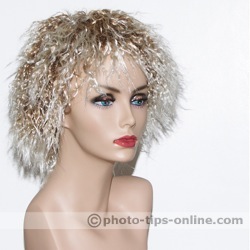 |
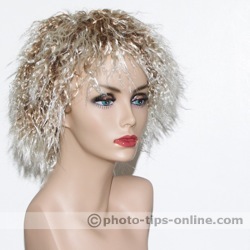 |
| 28mm lens zoom, regular flash zoom mode |
28mm lens zoom, extended flash zoom mode |
The idea of the extended zoom feature is to spread the light wider than it is necessary to cover the frame, so the light bounces off of the surrounding walls and ceiling to fill in the shadows. As you can see in both tests (60mm and 28mm), the shadows are, indeed, lighter in the extended zoom mode. This, of course, comes at the price of the reduced shooting range.














